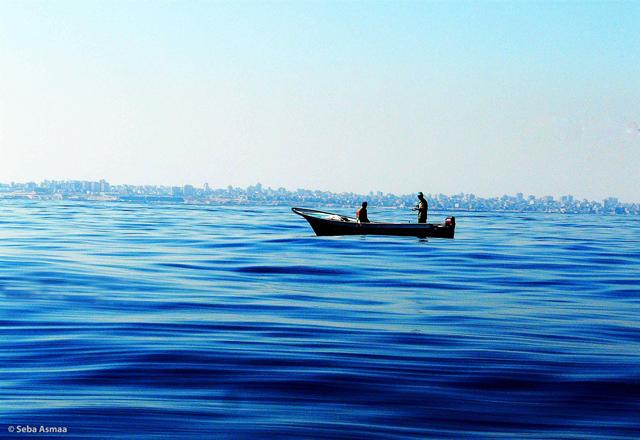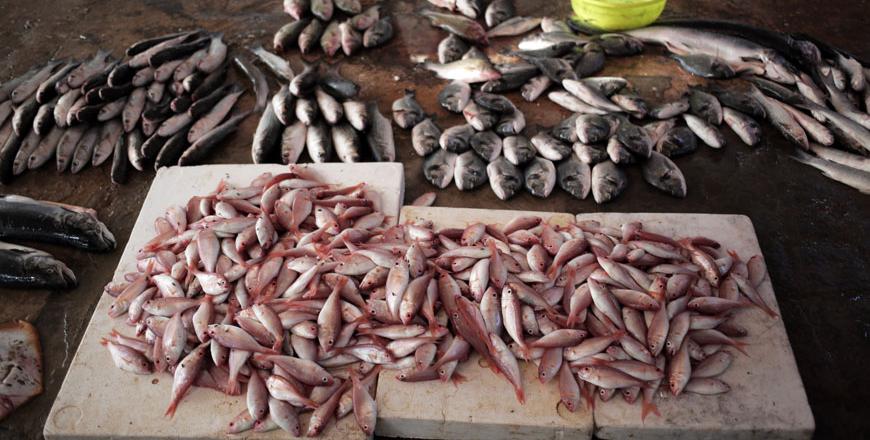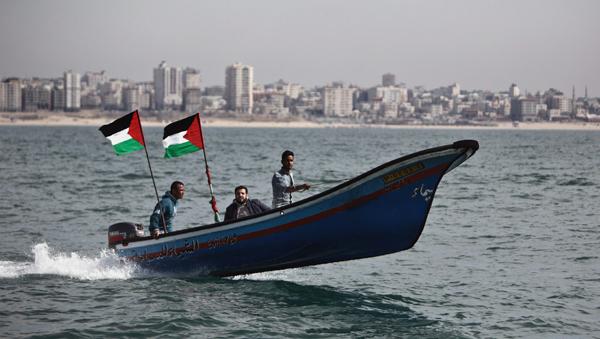You are here
A trade in danger
By Rand Dalgamouni - Mar 25,2014 - Last updated at Mar 25,2014

AMMAN — When Belgian photographer Asmaa Seba El Mourabiti is talking about Gaza, it is as if she is remembering family and close friends.
Her photos on display at Gallery 14 of fishermen in the coastal enclave, as they fight to make a living under the blockade, reflect the familial bond she has managed to forge with them during her five months there.
“This is Abu Adham,” the photographer said, pointing to a picture of a fisherman posing with a big fish — a rare catch under the circumstances that Gazan fishermen are forced to work. “And this is his son Yahya,” she said, indicating a photo of a young boy dreaming the day away on his father’s boat.
Seba El Mourabiti, who is of Algerian origin, recounted how she met Abu Adham on Gaza’s shore and — after much persuasion — went on to accompany him and his crew on their fishing trips over 30 times.
“They have an amazing relationship with the ocean,” she told The Jordan Times. “They call the sea ‘our mother’.”
But despite their devotion to the sea, many fishermen are thinking of abandoning the profession, according to the photographer, as Israel confines Gazans’ to a six mile (around 9.7km) fishing zone.
“They find nothing there but very small fish and sometimes nothing at all,” Seba El Mourabiti said.
“These people are now thinking of abandoning an ancient tradition that their grandfathers passed on to them.”
The exhibition, entitled “Fishermen of Gaza, a Trade in Danger”, highlights the difficulties facing those few who continue to cling stubbornly to the profession of their ancestors.
Despite everything, they are always smiling, celebrating every catch as a hard-earned victory.
The photos show fishermen young and old flaunting the tiny fish they just caught, with some of them flashing the victory sign.
“To them, going out every day into the sea is not just about catching fish. It is a way to tell the Israelis that this is their ocean,” said Seba El Mourabiti.
Abu Adham’s eldest son is one of those young adamant fishermen.
“He says ‘Even if I only catch one shrimp, to me it’s a victory’”, the photographer recalled, quoting 20-year-old Adham, the captain of his father’s rented boat.
She hopes that her exhibition, as it continues to tour other cities, shows a side of Gaza that is often overlooked.
“I wanted to show Gaza away from all the politics, to show that these are humans suffering under the blockade.”
Several photos show Israeli navy vessels in the background as an ominous reminder of what awaits the fishermen beyond the designated six miles.
“There you can see the Israeli navy ship. The Israelis were addressing the fishermen in Hebrew, so I asked Abu Adham to translate for me,” she said, pointing to one of the photos.
The translation revealed what she described as “horrible threats” to intimidate the Gazans. Yet, the fishermen in the photo are seen going about their business as if nothing is happening.
“They don’t care, although they might be shot at any moment.”
In another photo, Seba El Mourabiti gives a glimpse of the serenity associated with fishing even under occupation.
“I call this ‘Sailing Dream’. When you see the picture you don’t think they are in Gaza or that there’s a blockade.”
The photo depicts a fishing boat in the middle of the sea, with the shore miles away. The sea is calm, two men are fishing and there is not another soul in sight.
But this rare respite cannot change the bleak reality.
“I think in five years there won’t be any fishermen in Gaza,” the photographer said, though refusing to abandon hope, taking a leaf out of the Gazans’ book.
“This is why I love Gaza. They love life and they enjoy it in every moment. They helped me find my humanity. No matter what other work I do, Gaza will always have a place in my heart.”
The exhibition is part of the fourth Image Festival, organised by Institut Français and Darat Al Tasweer. It continues through March 29.
Related Articles
After hours casting their nets close to the Gaza shore, Palestinian fishermen sift through their catch in the dim dawn light, managing to scrape together a few piles of limp fish.
KHAN YOUNIS — The Gaza Strip, with a 40-kilometre Mediterranean coastline, was always known for its seafood until Israel restricted th
GAZA CITY — Gaza fishermen have begun working further off the coast after Israel relaxed restrictions for the first time in a decade but sai


















